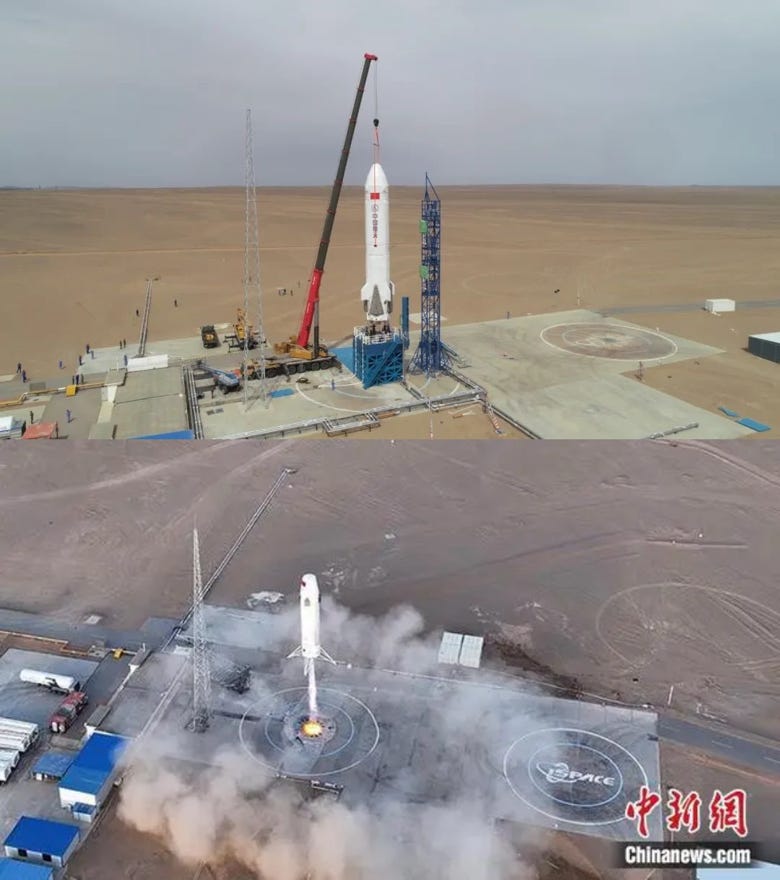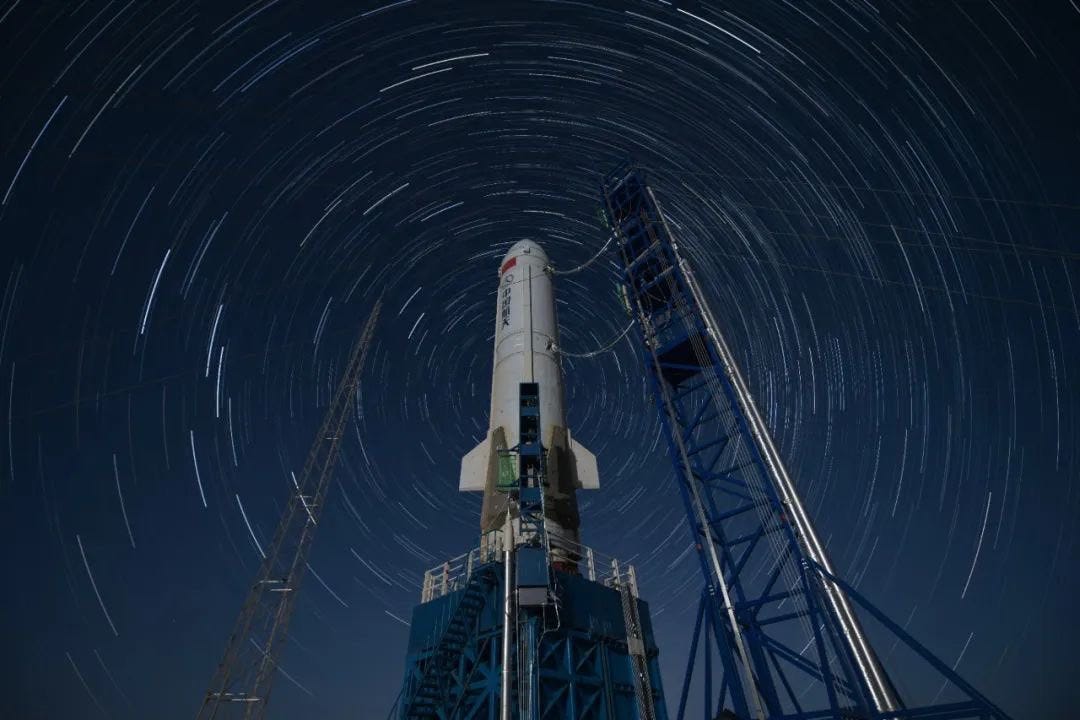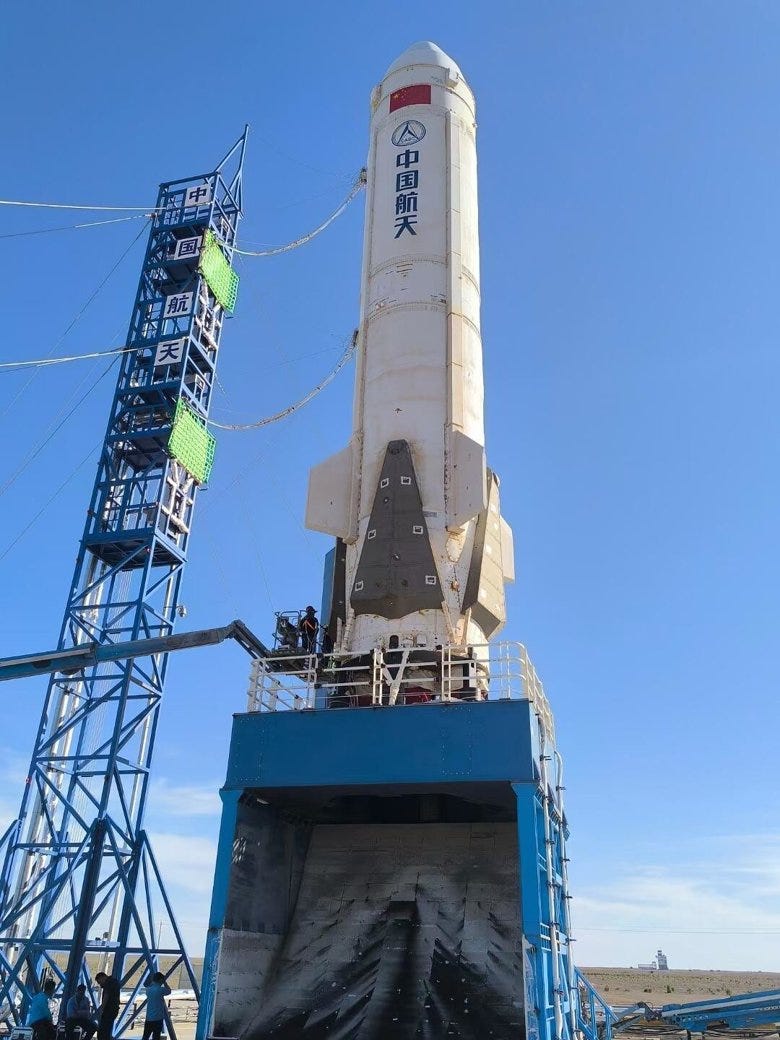Rocket hopping season begins in China! [CASC-SAST 10km Test Flight]
This post was originally posted on June 25th 2024 on Ko-fi.
Hello again all, the season of rocket 'hop' tests has kicked off in China with CASC/SAST's 10-kilometer flight test of its vertical-takeoff vertical-landing technology demonstration vehicle! This flight test was the first of three expected to occur in Quarter 3 of Fiscal Year 2024 (running from July 1st to September 30th) with the others being LandSpace's Zhuque-3 own 10km hop technology demonstrator expected in July and Tianlong-3 expected to fly its debut mission in September 2024, and could be considered a 'hop' as they seem to be looking to testing recovery with real vehicles along with being part of the country's next generation of launch vehicles. (I'd consider this test from CASC/SAST to be part of this three-month period of testing due to how late in Quarter 2 it occurred). With that out of the way, let's go over what happened during the flight!
June 23rd saw both China Aerospace Science and Technology Corporation and the Shanghai Academy of Spaceflight Technology complete China's first 10-kilometer+ launch and landing test. This test was due to become the second one of its kind in China but became the first due to LandSpace's delaying its 10-kilometer test for unknown reasons.
CASC has said that the flight lasted roughly six minutes (with the video above showing almost five minutes of the flight), and the maximum altitude of the flight is believed to be just above 12 kilometers. The test also occurred inside the Jiuquan Satellite Launch Center, from what is believed to be the same testing launch and landing pads as iSpace.

This was likely the same pad due to the clear burn marks on the landing pad, connecting road, and pipeline heading toward the top of both images.
SAST's involvement with the hop test is via its partner company Jiuzhou Yunjian (or JZYJ). Jiuzhou Yunjian developed the three Longyun engines used in the test. These engines burn liquid methane and liquid oxygen to generate 70 tons of thrust, leading to a combined maximum thrust of 210 tons. (These are also the same engines Space Epoch is looking to use on their reusable rocket).
The flight profile for the mission saw three engines igniting for the ascent, with the outer two of them being shutoff once the vehicle's apogee was high enough. A single engine remained on to ensure the test vehicle remained orientated correctly, as no grid fins were present but fins oddly were.
At fifty meters above the ground the test vehicle cancelled almost all of its vertical velocity at a height of fifty meters before it softly landed. The landing pad is a good distance away from the launchpad, likely to ensure it cannot fall onto it in the event of thrust loss on the descent.
CASC stated that the test proved: "get up, control accurately, spread out, and fall steadily" modes for a domestic reusable rocket during its flight. SAST was talkative about the landing legs stating that the landing proved: "flight locking, air unfolding and touchdown energy absorption" technology verifications.
The test vehicle is reportedly 3.8 meters in diameter and may potentially be modified for a 70-kilometer 'hop' test in the near future. Both CASC and SAST said in their related posts to the test that it has laid a solid foundation for the flight of a 4-meter diameter reusable rocket debuting in 2025. This vehicle is currently unnamed to my knowledge.





